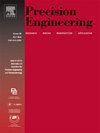TSP-based depth-first search algorithms for enhanced path planning in laser-based directed energy
IF 3.5
2区 工程技术
Q2 ENGINEERING, MANUFACTURING
Precision Engineering-Journal of the International Societies for Precision Engineering and Nanotechnology
Pub Date : 2025-01-11
DOI:10.1016/j.precisioneng.2025.01.009
引用次数: 0
Abstract
In the field of laser-directed energy deposition, it is crucial to optimize the path planning to improve the mechanical properties and ensemble fidelity of the precision printed samples. The traditional path planning methods typically require layer-by-layer calculation of the intersections between the scan lines and the contour loops, which leads to substantial redundant computations and low forming precision. In order to solve these problems, this paper transforms the path optimization into the Travelling Salesman Problem (TSP), followed by realizing the strategy of continuous inter-layer scanning through depth-first search. This method can generate efficient, non-intersecting connection paths in a short time, effectively reducing the total length of the connection path and processing time. Experimental results show that compared with the conventional zig-zag strategy, the path planning method based on TSP performs well in terms of near-net shape, compactness, and hardness of the molding samples. By shifting the intersection areas of the path to the outer contour and interacting the long and short sides, the method can realize the high precision joint part without gap forming and reduce the internal defects of the component.

基于tsp的激光定向能增强路径规划的深度优先搜索算法
在激光定向能沉积领域,优化路径规划是提高精密打印样品力学性能和整体保真度的关键。传统的路径规划方法通常需要逐层计算扫描线与轮廓环之间的交点,导致大量的冗余计算和较低的成形精度。为了解决这些问题,本文将路径优化问题转化为旅行商问题(TSP),然后通过深度优先搜索实现连续层间扫描策略。该方法可以在短时间内生成高效、不相交的连接路径,有效缩短了连接路径的总长度和处理时间。实验结果表明,与传统的锯齿形路径规划方法相比,基于TSP的路径规划方法在成型样品的近净形状、致密度和硬度方面都有较好的效果。该方法通过将路径的相交区域移至外轮廓,并将长、短边相互作用,实现了高精度的无间隙成形的连接件,减少了构件的内部缺陷。
本文章由计算机程序翻译,如有差异,请以英文原文为准。
求助全文
约1分钟内获得全文
求助全文
来源期刊
CiteScore
7.40
自引率
5.60%
发文量
177
审稿时长
46 days
期刊介绍:
Precision Engineering - Journal of the International Societies for Precision Engineering and Nanotechnology is devoted to the multidisciplinary study and practice of high accuracy engineering, metrology, and manufacturing. The journal takes an integrated approach to all subjects related to research, design, manufacture, performance validation, and application of high precision machines, instruments, and components, including fundamental and applied research and development in manufacturing processes, fabrication technology, and advanced measurement science. The scope includes precision-engineered systems and supporting metrology over the full range of length scales, from atom-based nanotechnology and advanced lithographic technology to large-scale systems, including optical and radio telescopes and macrometrology.

 求助内容:
求助内容: 应助结果提醒方式:
应助结果提醒方式:


